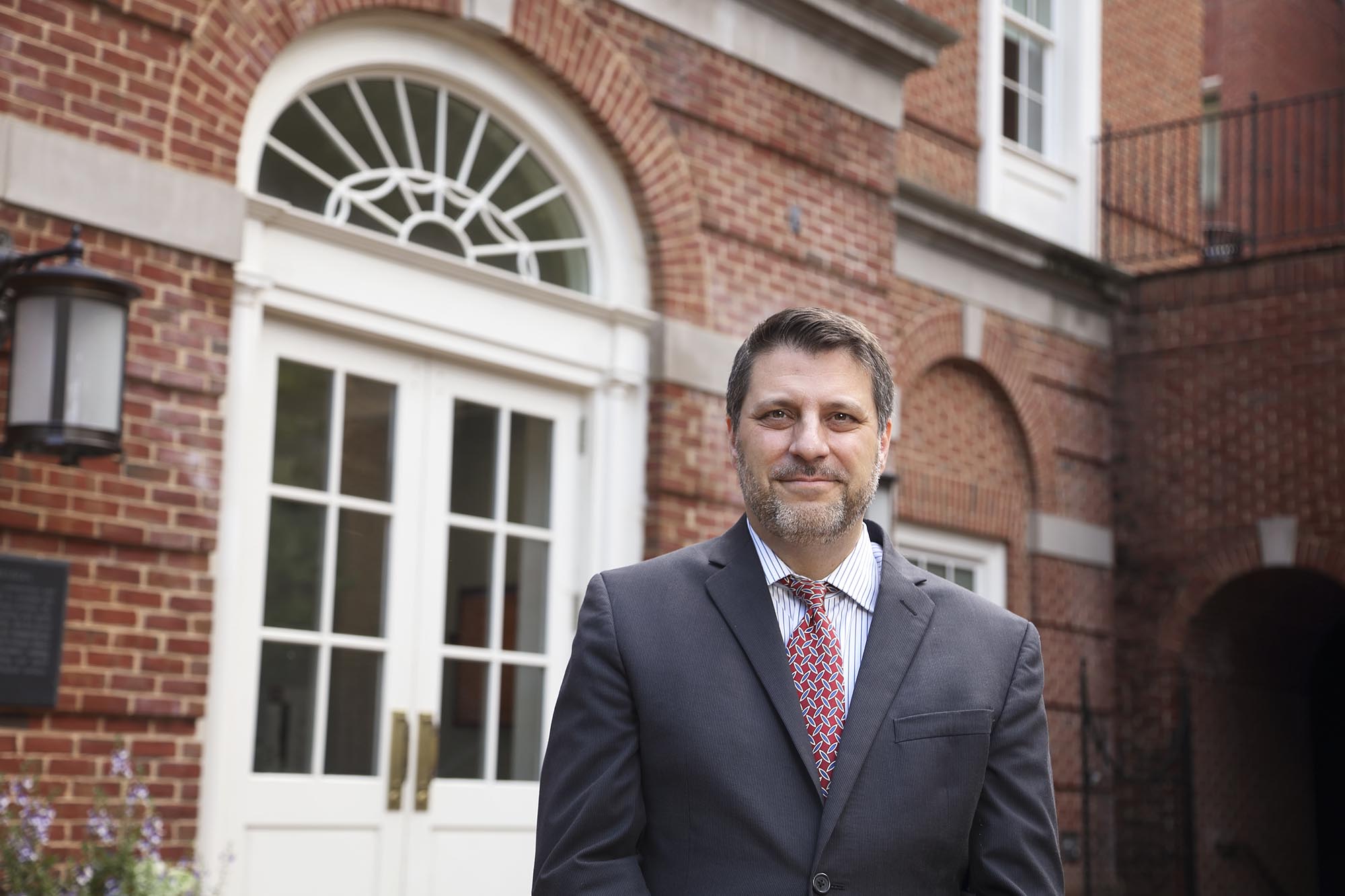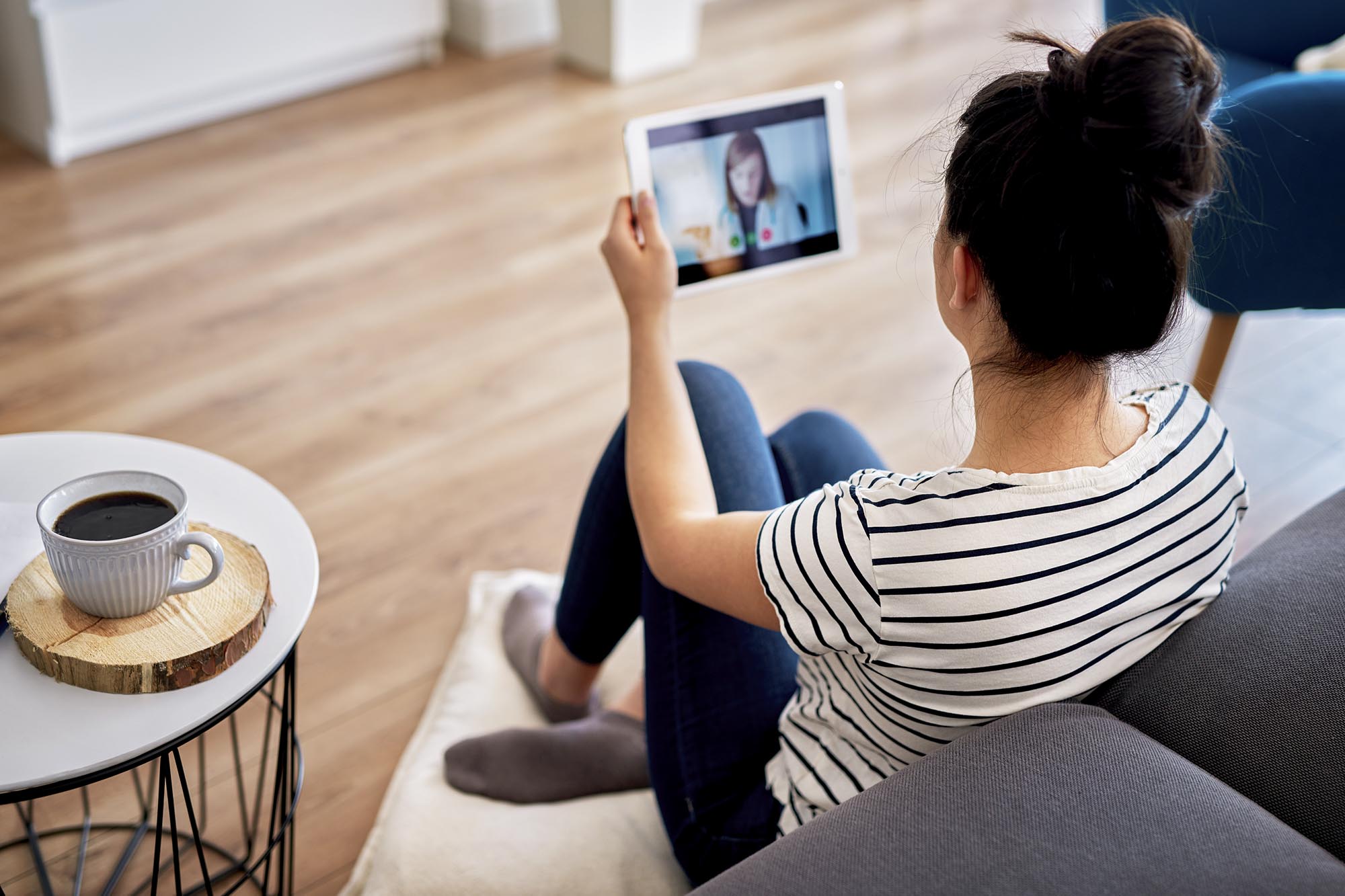When Peter Tuerk began his new role as director of the Sheila C. Johnson Center for Clinical Services in 2018, integrating data and technology into the center’s clinical training and services was a core part of his vision.
Still, even he never imagined the extent to which telehealth would become the cornerstone of clinical operations in coronavirus-ravaged 2020.
The Sheila C. Johnson Center at the University of Virginia’s Curry School of Education and Human Development, is a multidisciplinary training center that provides a range of clinical services to local children and families – including speech and language, hearing, reading, clinical psychology, educational assessment, autism spectrum services, and more. It also provides UVA students with important clinical training.
Tuerk, for his part, is uniquely suited to lead a transition to telehealth. He’s a clinical psychologist, researcher and educator specializing in evidence-based treatments for anxiety-spectrum disorders. Beyond his own award-winning work investigating telehealth to treat post-traumatic stress disorder, Tuerk also serves as co-editor of a book series devoted to behavioral telehealth, and has led several funded trials investigating the augmentation of evidenced-based interventions with novel telehealth technologies.
Here, Tuerk shares his thoughts on how the pandemic has shaped mental health services – and why it may lead to lasting changes in how we treat mental health.
Q. What exactly does telehealth look like for mental health services like therapy?
A. When most people think of telehealth for mental health services, they’re thinking of clinical videoconferencing, or synchronous telehealth, where therapists and patients exchange real-time conversation. In this context, the clinical encounter facilitates a fairly similar flow and content as in-person clinical services.
Communication in real time can be juxtaposed with asynchronous telehealth, such as texting- or mobile app-based tools, which can provide support or help to deliver key aspects of an intervention.
Before using telehealth, clinicians are often concerned about the therapeutic relationship; “How can I meaningfully connect with someone through a screen, or manage a child’s behavior?” These concerns often fade as clinicians gain experience with the modality. In many cases, after a while, the screen sort of melts away and you’re left with the person in front of you and the content and quality of the communication.

Peter Tuerk directs the Sheila Johnson Center, which provides local children with evidence-based clinical interventions and assessments for behavioral, educational and communication-related disorders. (Photo by Tom Cogill)
Q. What distinguishes evidence-based clinical videoconferencing from, say, venting to a friend over FaceTime?
A. All good psychological interventions usually help people understand themselves better. However, lasting change most often depends on helping people to behave differently as well. Evidence-based interventions are the specific methods used to promote self-understanding and behavior change that we know we can replicate and that are based in science.
Empathy, warmth and the ability to listen without judging or turning a conversation back on yourself – are all wonderful qualities that we want friends to possess when we vent to them. These qualities are also the cornerstone of evidence-based interventions, but that’s really just where the work begins. Those communication skills set up a positive collaboration so that clinicians can deliver or teach the core of a treatment or intervention. Specific intervention components depend on what you’re treating, of course, but they often involve behavioral assignments associated with emotional experiences or a desired outcome – facing fears, trying new skills or parenting techniques, hypothesis testing, and self-reflecting.
So one of the differences between talking to a friend for support and going to a psychologist for evidence-based intervention is that the psychologist is likely going to be placing some expectations on you. If your therapist isn’t helping you to grow or challenging you, then where’s the opportunity for change?
Q. What does the current research look like on telehealth for psychotherapy?
A. Overall, there is strong evidence to support the safety, acceptability and clinical effectiveness of interventions delivered via clinical videoconferencing. The evidence base spans six decades and includes heterogeneous populations, age ranges and care settings.
In recent years, we’ve seen a number of positive outcomes from especially rigorous randomized control trials, called non-inferiority trials, which have validated clinical videoconferencing as non-inferior to in-person care for a variety of common problems. The positive outcomes from these special trials, combined with dozens of outcomes from standard randomized control trials, and decades of open trials and case reports, put us on particularly solid ground. It’s very good news for our current situation and the rapid adoption of telehealth treatments.
Q. In the short term, how have you seen the current coronavirus crisis affecting telehealth for mental health services?
A. Overall, we are witnessing unprecedented flexibility: state and federal regulations regarding telehealth practice were temporarily expanded, enforcement of HIPAA data security rules were temporarily flexed, private and federal insurance programs radically expanded their coverage for telehealth services, credentialing requirements for providers were fast-tracked or waived, and for many consumers, co-pays for mental health treatments delivered via telehealth were also waived.
In spite of the horrible COVID-19 national emergency, this part of it has been a really wonderful thing to witness and be a part of. Immediately after quarantine become a reality, clinics and providers started receiving very positive messaging from the federal government, most states, and many insurers – they were saying, “Get this done for your patients.”
Q. In the long term, how do you think the virus outbreak will change the telehealth landscape?
A. Obviously, the landscape of telehealth access will be fundamentally different after this virus. Even though restrictions are coming back online, patients are going to expect greater access to telehealth. More importantly though, the telehealth skills of a large part of our mental health workforce and their comfort with providing those services will have been fundamentally altered, significantly lowering traditional barriers to telehealth dissemination.
I also think the virus has made it clear that prioritizing access to mental health services within health infrastructures is critical. As a culture, we have wide acceptance that mental health is an important public health priority, yet our institutions, policies and regulations do not necessarily reflect those values, nor have they kept pace with evolving technologies and science. Mental health parity, state restrictions on telehealth implementation and dated business processes related to HIPAA enforcement act as unintentional barriers to widespread access to evidence-based telehealth care, especially in highly rural areas.
Perhaps the current situation will lead to a realization that we may be able to streamline access to care and remove barriers without compromising safety, security or ethical oversight.
Q. How have you all at the Sheila Johnson Center been managing? What kinds of changes are you working to implement with your services?
A. We wanted to provide seamless care to as many of our clients as possible, and also to protect clinical hours necessary to our students for licensure and internship. The core steps included securing a telehealth platform, onboarding our 80-some clinicians, conducting trainings in telehealth and adapting the electronic medical record and schedule to support virtual clinics. This would typically take months, but the circumstances dictated that we try to do it in about a week, to leave time for working the bugs out before going live.
The most important resources we had were really our students, supervisors and staff, who worked quickly, creatively and with purpose as a team. Those efforts were also met with unwavering support from the Curry School operations offices.
As a result of this collaborative effort, we were open for business with expanded hours in a matter of days. This doesn’t mean that our students weren’t also feeling uncertain or a bit scared, like everyone else in mid-March. But it does mean that they prioritized their clients’ care, learned and practiced new protocols, problem-solved and remained focused on their service missions in spite of less-than-ideal conditions. They showed up and did their part for our community.
This week our student clinicians passed the 1,000 mark of completed telehealth appointments. In addition to ongoing services, our clinical supervisors and students have implemented a telehealth social skills groups for youth with autism spectrum disorder, and expanded parent training to help families address home schooling and added stresses of parenting during the COVID-19 crisis.
In the coming weeks we will be implementing our annual summer reading program for students in kindergarten through middle school, initiating Camp Cope-A-Lot, a well-researched treatment for children ages 7 to 10 with anxiety, and emphasizing evidence-based individual treatments to address trauma and stress in the current climate, all through teleservices.
My hope is that the experience might stick with our students as a tangible testament to what they accomplished with individual and group dedication. High-quality clinical training and services is a group sport. We really are all in this together.
Media Contact
Article Information
June 10, 2020
/content/qa-treating-mental-health-time-coronavirus

